Prague
CITY OF A HUNDRED SPIRES
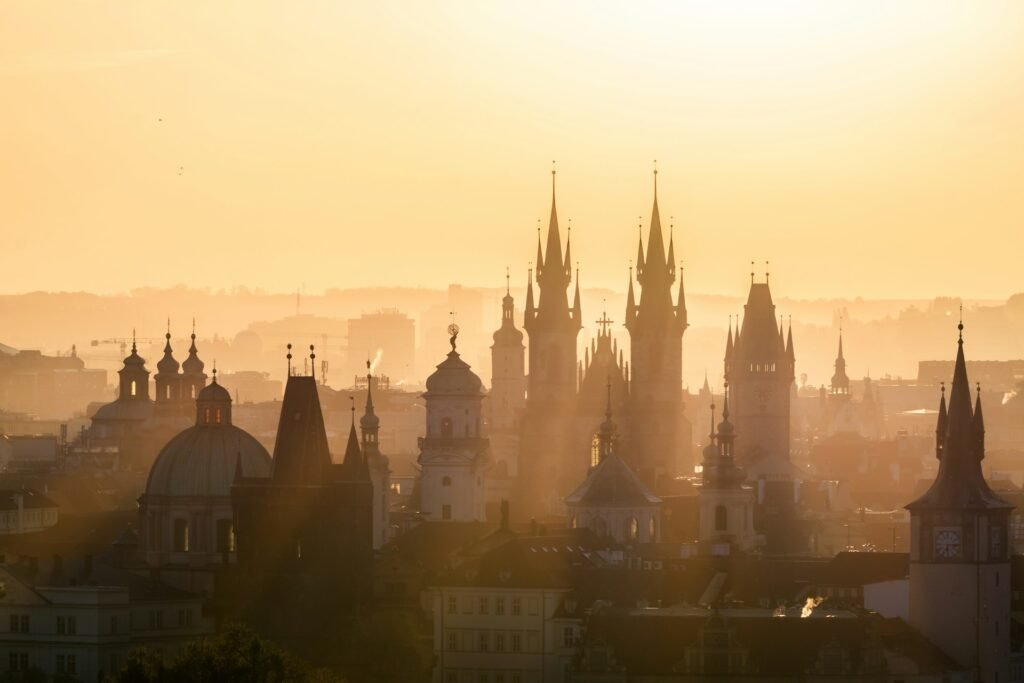
It helps keep this site running, and we appreciate your support!
Sightseeing
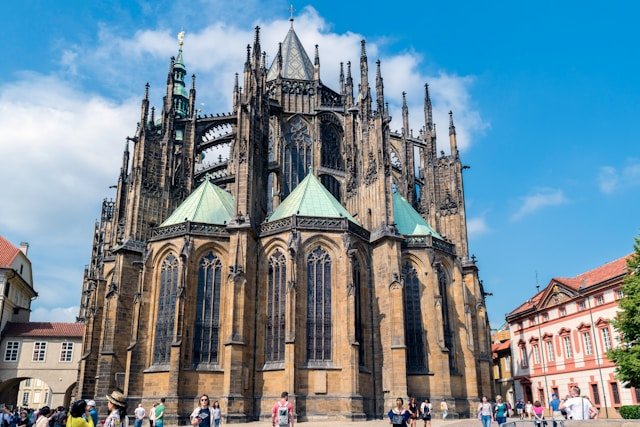
Prague Castle and St. Vitus Cathedral
Prague Castle, one of the largest ancient castles in the world, is a sprawling complex in the heart of Prague, Czech Republic, dating back to the 9th century. It has served as the seat of Czech rulers, emperors, and presidents, blending architectural styles from Gothic to Baroque across its palaces, churches, and gardens. Within its grounds lies St. Vitus Cathedral, a stunning Gothic masterpiece begun in 1344 under Charles IV. The cathedral, with its soaring spires and intricate stained-glass windows, is not only a spiritual center—housing the tombs of Bohemian kings and the Czech crown jewels—but also a symbol of Czech heritage, dominating the Prague skyline. Together, they form a historic and cultural anchor, drawing millions to explore their grandeur and stories.
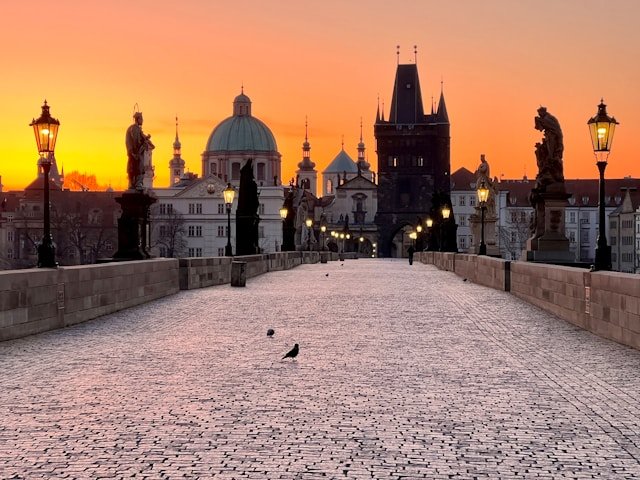
Charles Bridge
Charles Bridge, an iconic stone bridge in Prague, stretches across the Vltava River, connecting the Old Town with the Lesser Town and leading toward Prague Castle. Commissioned in 1357 by Emperor Charles IV and completed in the early 15th century, it’s a marvel of medieval engineering, adorned with 30 Baroque statues of saints that line its parapets, most added in the 17th and 18th centuries. Originally the only crossing over the river, it bustle with pedestrians today—tourists, artists, and musicians—while its Gothic towers, the Old Town Bridge Tower and the Lesser Town Bridge Towers, stand as sentinels at each end. The bridge not only links the city physically but embodies Prague’s rich history and artistic soul.

Old Town Square
Dating back to the 12th century, this historic heart of Prague buzzes with life amid its cobblestone expanse. Surrounded by colorful Baroque buildings, Gothic churches, and Renaissance facades, it’s home to the famous Astronomical Clock—or Orloj—on the Old Town Hall, which has been ticking since 1410 and draws crowds for its hourly mechanical show. The square has witnessed everything from royal coronations to public executions, with the towering Týn Church and the statue of Jan Hus adding to its dramatic skyline. Today, it’s a vibrant mix of tourists, street performers, and seasonal markets, all steeped in centuries of Czech culture.
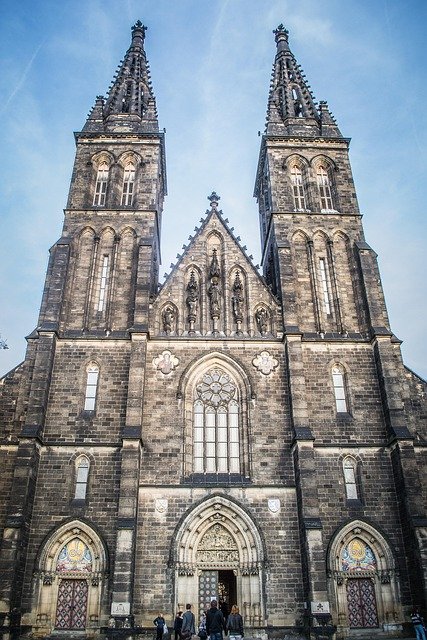
Vyšehrad
Perched on a hill overlooking the Vltava River, this ancient fortress in Prague offers a quieter counterpoint to the city’s bustling center. Founded in the 10th century, it’s steeped in legend—said to be the original seat of Czech rulers before Prague Castle took precedence. The complex boasts the Romanesque Basilica of St. Peter and St. Paul, with its striking twin spires, and the Vyšehrad Cemetery, a resting place for Czech luminaries like composer Antonín Dvořák and writer Karel Čapek. With its panoramic views, serene parklands, and remnants of medieval walls, it’s a place where history whispers through the stones.
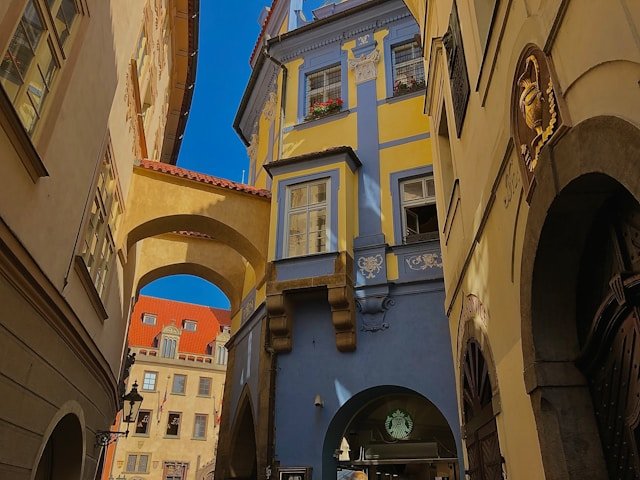
Jewish Quarter
Nestled within Prague’s Old Town, this historic neighborhood, known as Josefov, carries the weight of centuries of Jewish heritage. Once a walled ghetto established in the 13th century, it’s home to Europe’s oldest active synagogue, the Old New Synagogue, built around 1270, and the hauntingly beautiful Jewish Cemetery, where tombstones tilt in layers from the 15th to 18th centuries due to limited space. The area also houses the Jewish Museum, preserving artifacts from a community nearly wiped out during the Holocaust—most of Prague’s Jews were deported by the Nazis, leaving these sites as solemn memorials. Today, its elegant streets blend somber history with a refined, modern charm.
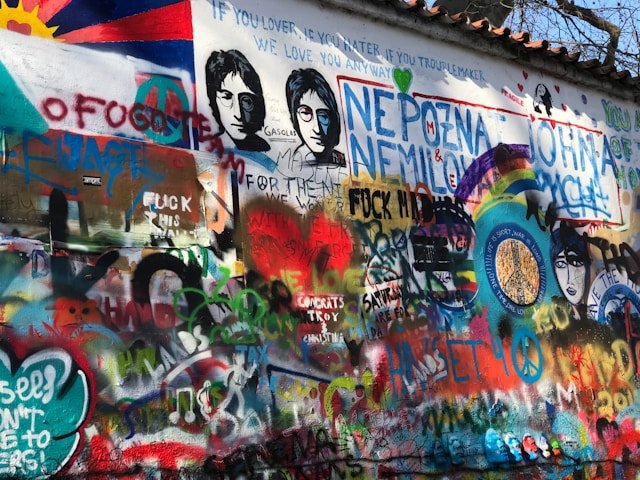
Lennon Wall
Tucked away in Prague’s Lesser Town, this vibrant, ever-changing mural began as a spontaneous tribute to John Lennon after his 1980 assassination. What started with a single portrait and lyrics on a plain wall morphed into a colorful canvas of graffiti, peace messages, and Beatles-inspired art, defying Czechoslovakia’s communist regime, which saw it as subversive. Authorities repeatedly painted it over, but locals and visitors kept it alive, making it a symbol of freedom and resistance. Today, it’s a dynamic, legal space where anyone can add their mark, reflecting a spirit of creativity and hope.
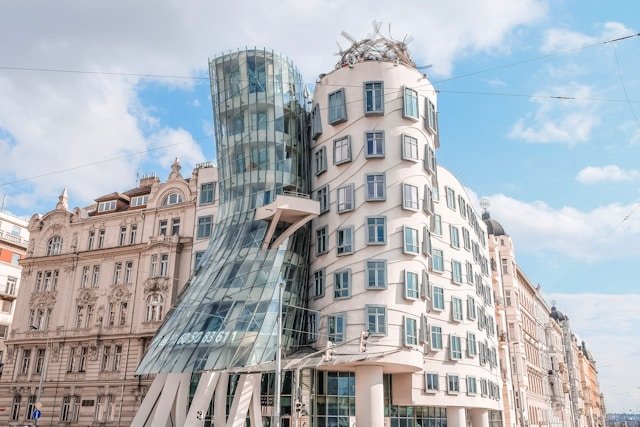
Dancing House
Rising from Prague’s riverside skyline, this quirky, modern structure breaks the mold of the city’s historic architecture. Designed by architects Vlado Milunić and Frank Gehry, it was completed in 1996 on a site once bombed during World War II, symbolizing renewal with its playful, twisting form—nicknamed “Fred and Ginger” for its resemblance to dancing figures. The deconstructivist building, with its glass tower leaning over a concrete base, sparked debate for clashing with Prague’s Gothic and Baroque aesthetic, yet it’s grown into a beloved landmark. Housing offices, a gallery, and a rooftop restaurant with sweeping views, it’s a bold nod to the city’s evolving identity.

Klementinum
Spanning a vast complex in Prague’s Old Town, this former Jesuit college, founded in 1556, is a treasure trove of history and beauty. Its Baroque Library, often called one of the world’s most stunning, dazzles with frescoed ceilings, gilded details, and thousands of ancient books, preserved in their original 18th-century state. The Astronomical Tower, another highlight, offers panoramic views of the city and once served scholars tracking the stars—its weather records date back to 1775. Today, it’s part library, part museum, blending intellectual legacy with architectural splendor near the Charles Bridge.
Activities
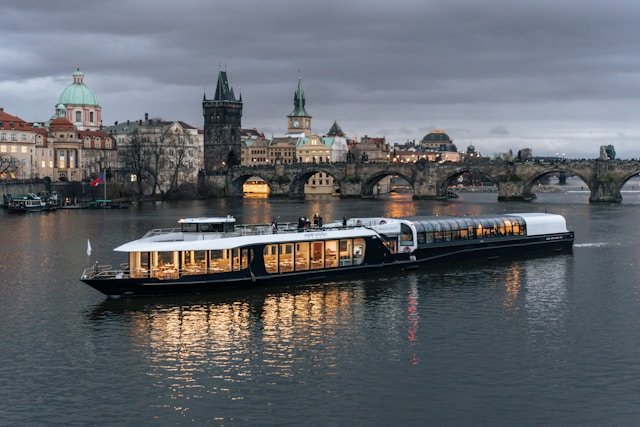
Prague River Cruises
Cruising the Vltava River offers a fresh view of Prague’s iconic sights, like Prague Castle, Charles Bridge, and the Dancing House. Ranging from quick hour-long trips to longer lunch or dinner outings with live music, these tours depart near the Charles Bridge or Čech Bridge. Operators like Prague Boats provide eco-friendly or historic boats, blending scenic beauty with Czech charm—perfect for a relaxed glimpse of the city.

Prague Astronomical Clock
Mounted on the Old Town Hall in Prague’s Old Town Square, this medieval marvel, known as the Orloj, has been ticking since 1410, making it one of the world’s oldest functioning astronomical clocks. Crafted by clockmaker Mikuláš of Kadaň and later refined by Master Hanuš, it’s a blend of science and art, tracking time, zodiac signs, and celestial movements with its intricate dials. Every hour, crowds gather for “The Walk of the Apostles,” a mechanical show where wooden figures emerge, joined by Death ringing a bell and a crowing rooster. Beyond its technical wizardry—damaged in WWII but meticulously restored—it’s a symbol of Prague’s enduring ingenuity, captivating visitors with its Gothic charm and quirky precision.
Aquapalace Praha
Just outside Prague in Čestlice, this sprawling complex is Central Europe’s largest water park, blending thrills and relaxation under one roof. Opened in 2008, it spans over 9,000 square meters with three themed zones: the Palace of Adventure, packed with adrenaline-pumping slides like the 250-meter-long Spacebowl; the Palace of Treasures, a pirate-themed haven with gentle waves and swaying palms; and the Palace of Relaxation, offering calm pools and whirlpools. Beyond the water world, there’s a 1,750-square-meter Sauna World with 14 saunas, Roman baths, and outdoor cabins, plus a wellness spa and fitness center. Connected to the four-star Aquapalace Hotel, it’s a year-round escape, easily reached by a free shuttle from Prague’s Opatov metro station—perfect for families, thrill-seekers, or anyone craving a break from the city’s cobblestone streets.
Black Light Theater
A unique theatrical experience awaits in Prague with Black Light Theater, a performance style that blends mime, dance, and stunning visual effects using ultraviolet light. Originating in the 1960s with Czech director Jiří Srnec, it thrives in the city, often called its global home. Performers, dressed in fluorescent costumes, move against a black backdrop, creating illusions of floating objects or disembodied motion—think glowing props or “invisible” actors manipulating the scene. Shows are typically non-verbal, relying on music and choreography, making them accessible to all. Venues like Srnec Theatre, HILT, and WOW offer distinct takes, from classic tales to modern twists, usually lasting 60 to 90 minutes. It’s a quirky, mesmerizing slice of Czech culture that’s evolved from experimental roots into a must-see for visitors.
Tips for Booking Flights to Prague
Hotels
General Tips for Visiting Prague
Tipping Norms
Language Hacks
Weather Prep
Getting Around in Prague
Day Trips by Train
Best Time to Visit Prague: Season and Weather
Value Index
Safety in Prague for Tourists
The city center feels secure day or night, with well-lit streets and a visible police presence, though quieter areas like Žižkov might call for a bit more awareness after dark. Solo travelers, including women, generally report feeling comfortable, thanks to Prague’s welcoming vibe and reliable public transport. Emergency services are solid—dial 112 if needed—and tap water’s safe to drink, rounding out a reassuring picture. Stick to common sense, and Prague’s a breeze to enjoy without worry.
